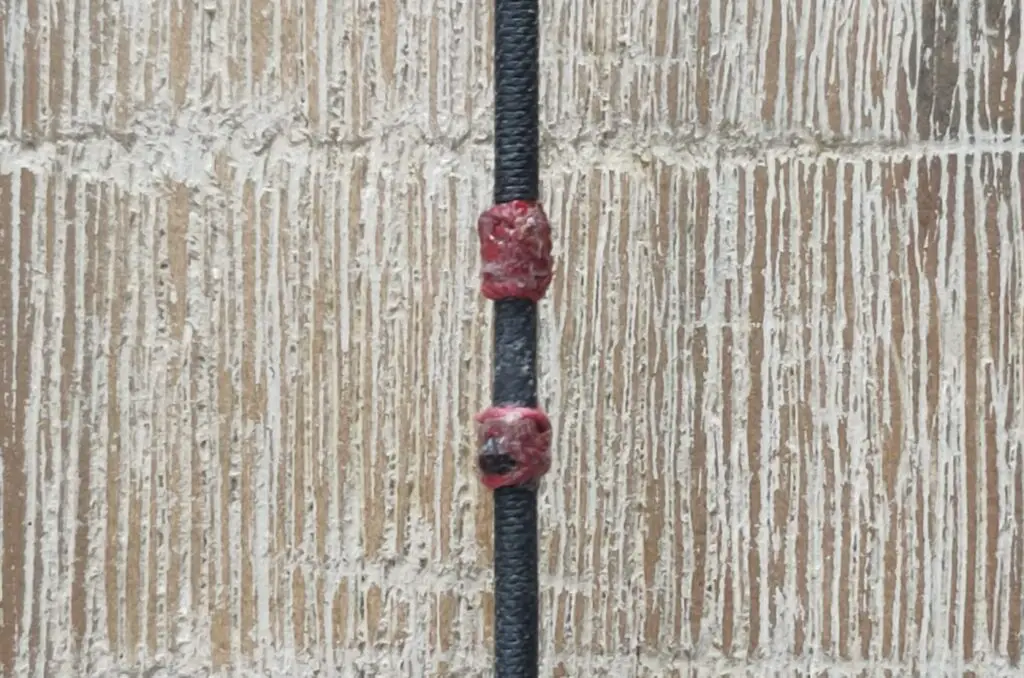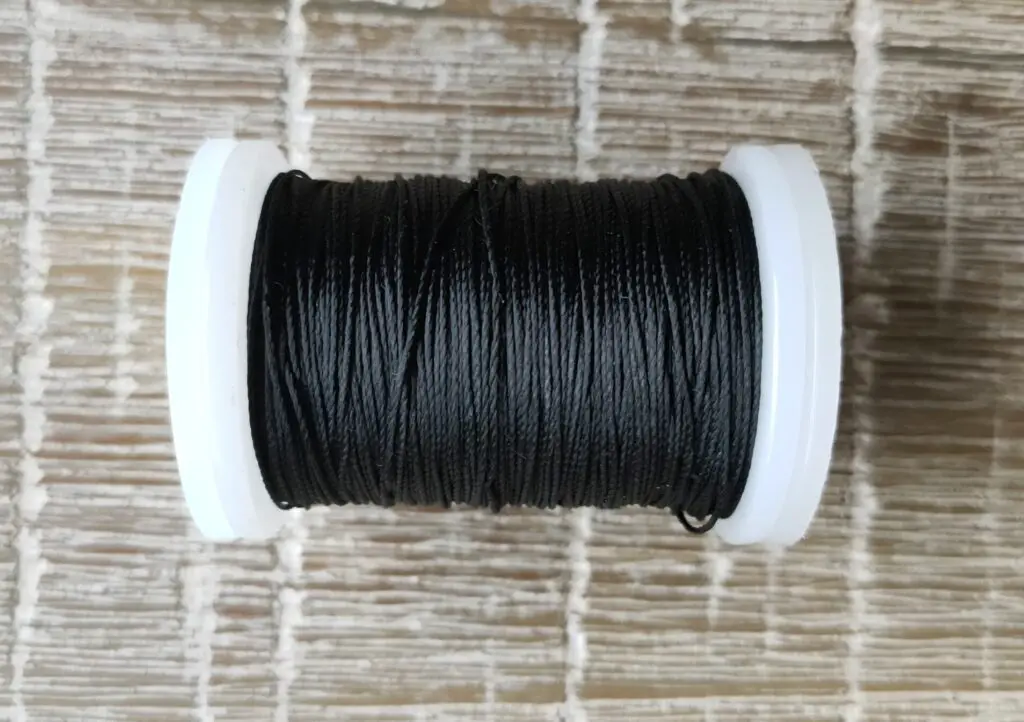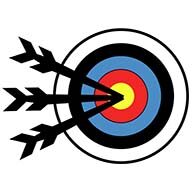Every bow should be set up with nocking points or nock locators as they are often called. But as you probably know there are two options brass nocking points crimped on the string and nocking points tied on with serving wire. But which one is better? I will discuss this in detail in this article.
For most archers, tied-on nocking points are the better option. Tied-on nocks are more secure, cheaper, lighter and you don’t need proprietary tools. Brass nocking points are only the better option if you are frequently moving your nock locator.
Although tied-on nocks are the better option for most archers, brass nocking points also have a set of benefits. Therefore, I will discuss the pro’s and con’s of both options.
The benefits of brass nocking points
Brass nocking points have been used for years, especially by traditional archers. The nocking points have the following benefits over tied-on nocks.
They are easier to install
The biggest benefit of brass nocks is that they are much easier to install. Just place the brass around the string and squeeze it shut with the specialized nock pliers.
Tying nocking points with serving wire is just more cumbersome. You first must wind the wire around the string and pull it tight. You then must make a few knots, which can be quite difficult because the wire is very thin.
Especially if you are maintaining many bows, for example for an archery club, this could be a very important benefit.
They last longer
Another benefit of brass nocks is that they can suffer more abuse without breaking. Brass is simply more durable than wire. It’s quite a common issue for tied nocking points to fray and come loose.
I have to say though, that I found a solution to fix this issue for tied-on nocks. Just put a generous amount of superglue on the nocks. This will make the nock as strong as brass nocks or even stronger. But the superglue will make it quite difficult to remove it again.

They are easier to adjust
Another good reason to pick brass nocks is that they are easier to adjust. You can easily bend the brass back with some needle nose pliers or a screwdriver and use it again. With tied-on nocks, you must cut the knot and throw it away.
Although you shouldn’t change your nocking points all the time, you might want to occasionally change it. Maybe your string has stretched, or you might have made a mistake. With brass nocks, it’s way easier to correct them.
The benefits of tied nocking points
Most archers use tied nocking points now-a-day. That is because of the following reasons.
You don’t need proprietary tools
Just like a lot of other technical sports, archery requires a lot of specialized tools to work on your bow, such as bow gauges, a bow vice, bow square, and serving jig, just to name a few. Any option that cuts out one of these specialty tools is a huge plus in my opinion. It makes archery more expensive and complicated.
If you are using brass nocking points, you will need a special set of pliers called crimping pliers. These pliers can easily cost you $10 or more. Although it’s not a huge investment, it’s still a nice saving.
It’s the cheaper option
If you are on a tight budget choosing tied nocking points is the better option. Not only do you have to buy crimping pliers, but brass nocking points are also more expensive. If you don’t buy them in bulk, they can easily cost a dollar apiece.
If you are working on your own bow, you probably already have a spool of serving wire laying around. If you don’t, I highly recommend buying some. The middle serving will degrade over time from abrasion of the arrow and your finger protection.
A lot of archers buy a new string when their serving is damaged, but you can easily replace it if you had a spool of wire.
Since you only need about 10 inches (25 cm) of serving wire to make one nocking point it’s simply much cheaper to use serving wire as nocking points.

They feel more comfortable on your fingers
Another benefit of tied nocking points is that they are more comfortable on your fingers. This is especially important if you shoot with one finger above and two fingers below the arrow. The brass nocking point has sharper and harder edges than a tied nocking point. Therefore, a brass nocking can also cut in your finger protection, which means that you must buy new finger protection more often.
Tied nocks are more secure
Although brass nocks might seem secure, they can come loose every so often. When the string stretches, the string will become slightly thinner which can cause the brass nock to come loose. Also, the brass can bend back from the vibration of the bow.
This will cause the nock to slip down on the string. When this happens, you must take your measurements again and crimp the nock back on. This can be especially frustrating if this happens during a competition.
They are lighter
Archers often want to increase arrow speed. A higher arrow speed decreases arrow drop and wind drift. That is why a lot of archers want to increase their draw weight when their strength allows it.
But there is another way to increase the arrow speed. If the string has to move less weight, more energy will be transferred to the arrow. Therefore, if you shoot with lighter nocking points, you will increase your arrow speed.
I have to say though, that the difference is very minor, you probably won’t even notice this. But this is one of the primary reasons I hear why archers prefer tied-on nocking points. I believe, however, that the previously mentioned benefits are way more important.
Recommended products
If you are looking for some good nocking points, I would recommend the products below:
Brass nocking points
If you want to buy some brass nocking points, I recommend this package from Keshes. This package features 6 brass nocking points, crimping pliers, and a bow square. Because you buy it all in one, you will save a lot of money!
Serving wire
If you want to use tied-on nocks, I recommend this Bowstring serving set from WW Zat. If you don’t have serving material, you probably also don’t have a serving jig. Replacing your serving without a jig is nearly impossible, so it’s cheaper to buy both in one set.
Bow square
To properly attach your nocking points, you first need to measure the right position with a bow square. You can also improvise with a ruler, but that won’t be very exact and since minor mistakes can cause issues, I won’t take the risk. I have this bow square from Easton and thus far I am happy with the overall quality
Which one you should choose
Okay, let me give you a short recap. For most archers, tying your nocks will be the better option. It’s cheaper and you don’t need proprietary tools. Since you shouldn’t change your nocking points often it doesn’t matter that much how easy it is to install.
Therefore, I would only recommend brass nocking points for people that maintain many bows. If you for example rent out bows, taking 10 minutes to tie nocking points might not be preferable. In that case, crimping some brass nocking points in place can be a lot easier and faster, especially because they are also easy to remove or adjust.
Do you need 1 or 2 nocking points?
Another common question I get is whether you should have 1 or 2 nocking points. You see a lot of archers with 2 nocking points, but some archers believe that this can cause issues. The idea is that the nock can pinch the arrow which can cause the arrow to stick to the string when you release.
This is only the case if the distance between the two nocking points is too small. If you set them up correctly it won’t cause any issues. If you want to learn more about this discussion, I recommend reading the article below:
1 vs 2 nocking points – what is better?
Final words
As I final message, I would like to clarify that neither option is wrong or right. It’s mainly based on your preference. If you have always been using brass nocking points and you don’t want to switch, there is nothing wrong with that.
But if you are new to archery I recommend using tied-on nocking points. Brass nocking points are a bit old school and get used very little by competitive archers. So just go with the popular option!
If you have any questions, comments, or suggestions you would like to add, please leave them in the comment section down below. I will respond as soon as possible and send you an email once I replied.
Tim van Rooijen
For as long as I can remember, I have always been fascinated by archery. First due to its historic significance but later because I like being outdoors. With this blog, I share my knowledge about Archery and how you can improve your shot. More about author…





If you use a d-loop, what purpose do tied nocking points serve? Why not just tie you d-loop where you’d put nocking points?
Hi George, indeed if you are using a D-loop, you do not need separate nocking points. This article is primarily focussed on Recurve archers that do not use a D-loop.